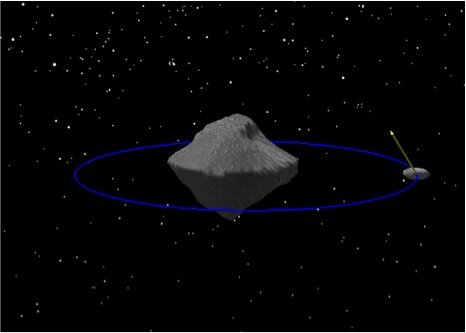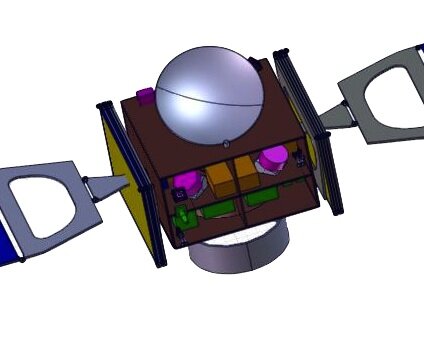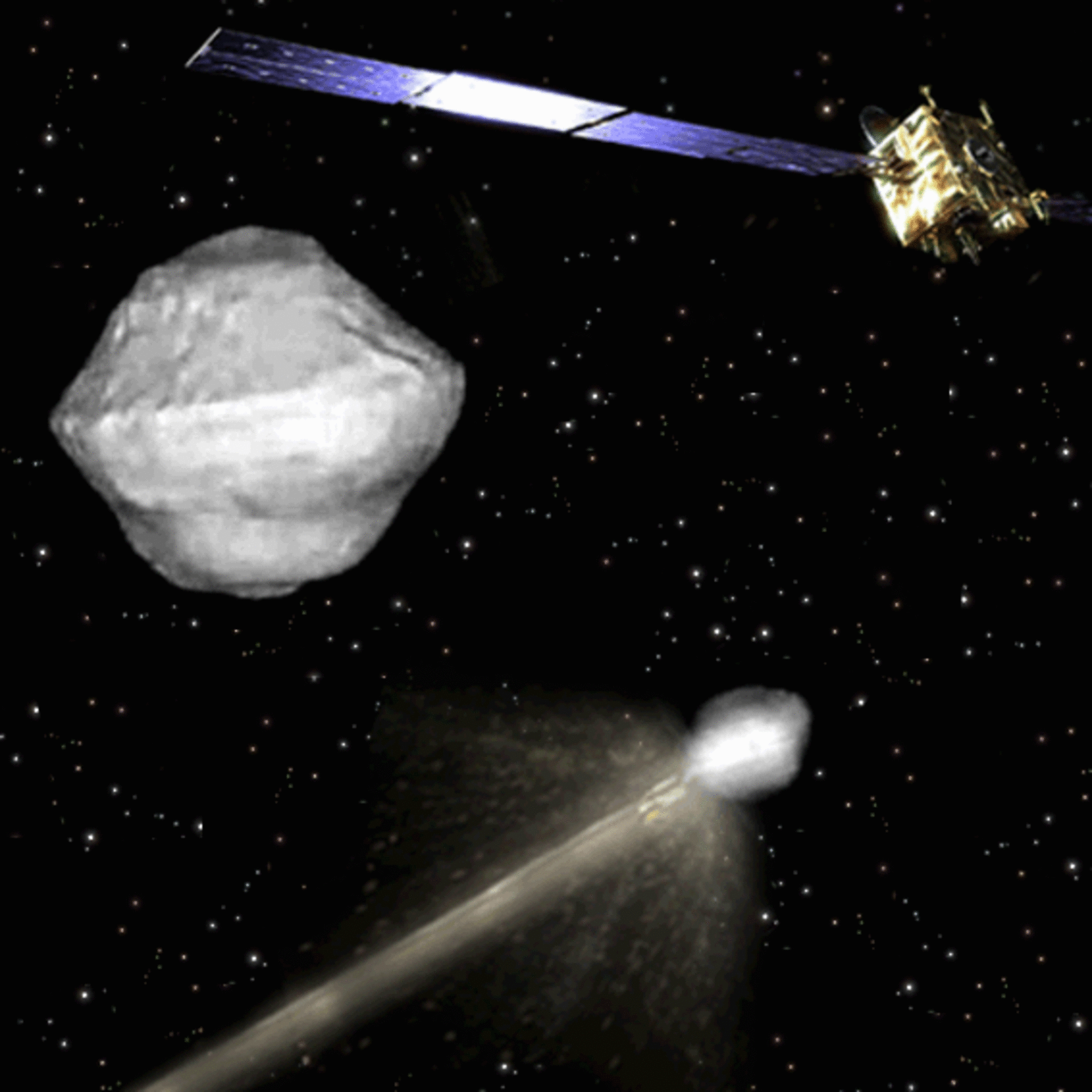Asteroid impact mission targets Didymos
ESA’s proposed Asteroid Impact and Deflection Assessment mission now has a target: asteroid Didymos. The recent Russian meteor and, on the same day, our planet’s close encounter with an even larger chunk of celestial debris underline the need for us to learn more about these high-speed space rocks.
For the last two years, ESA has been working with international partners on the mission concept, dubbed AIDA. Last week, research centres each side of the Atlantic agreed the spacecraft would target asteroid Didymos.
Currently under study, the mission would intercept Didymos around the time of the asteroid’s closest approach to within 11 million km of Earth in 2022.
Didymos is a ‘binary’, with two asteroids orbiting each other – one is roughly 800 m across, the other about 150 m.
AIDA is a low-budget international effort that would send two small craft to intercept a double target. While one probe smashes into the smaller asteroid at around 6.25 km/s, the other records what happens.
One effect would be a change in the orbital ballet of the two objects. AIDA is not intended to show how we could deflect an asteroid that threatens Earth but it would be a first step.

The craft are conceived to be independent and could achieve most of their goals alone. The collider is the Double Asteroid Redirection Test, or DART, from the Johns Hopkins’ Applied Physics Laboratory in the US. ESA’s Asteroid Impact Monitor, or AIM, would survey Didymos in detail, before and after the collision.
Didymos poses no risk to our planet, but will come close enough to be observable by 1–2 m-diameter telescopes on Earth before and after the strike. AIM’s close-up view would provide ‘ground truth’ and observe the impact dynamics as well as the resulting crater, allowing ground-based observations and models to be evaluated.
Earlier this month, ESA issued a call for scientists to propose experiments that could be carried on the mission or performed on the ground to increase its return.
“AIDA is not just an asteroid mission, it is also meant as a research platform open to all different mission users,” says Andrés Gálvez, ESA studies manager.
“The project has value in many areas,” agrees Andy Cheng, AIDA lead at Johns Hopkins’ Applied Physics Laboratory, “from applied science and exploration to asteroid resource utilisation.”
Researchers have until 15 March to express their interest. The experiment ideas can be anything that deals with hypervelocity impacts, planetary science, planetary defence, human exploration or innovation in spacecraft operations.
The energy released in the AIDA impact at several kilometres per second is similar to that of a large piece of space junk hitting a satellite. The mission would thus help to model severe spacecraft damage by space debris.

“It is an exciting opportunity to do world-leading research of all kinds on a problem that is out of this world,” says Stephan Ulamec from the DLR German Aerospace Center. “And it helps us learn how to work together in international missions tackling the asteroid impact hazard.”
“A mission such as this allows us to test technologies before any asteroid is identified as a threat,” explains Patrick Michel, leader of the Planetology team at the Observatoire de la Côte d´Azur (OCA, Lagrange Laboratory) and a member of the Working Group on Near-Earth Objects of the International Astronomical Union.
“Understanding the physics of impacts is also key to planetary science and binary asteroid dynamics.”
For further information, please contact:
Andrés Gálvez
ESA General Studies Programme manager
Future Preparation and Strategic Studies Office
ESA Headquarters, Paris, France
Email: Andres.Galvez[@]esa.int
Notes for Editors
AIDA is a project with a strong international component. Together with the 20-nation ESA and the US JHU/APL, experts from the French OCA, the DLR German Aerospace Center and several NASA centres (Johnson Space Center, Langley Research Centre and Goddard Space Flight Center) are participating in the mission definition. A dedicated workshop on this and related projects will be held as part of the Planetary Defence Conference in Flagstaff, Arizona, USA on 19 April, where the results of the call for experiment ideas will be presented.
The two components of the AIDA mission are funded throughout their study phases. DART is supported by a NASA contract, while AIM mission studies are paid for by ESA’s General Studies Programme.






